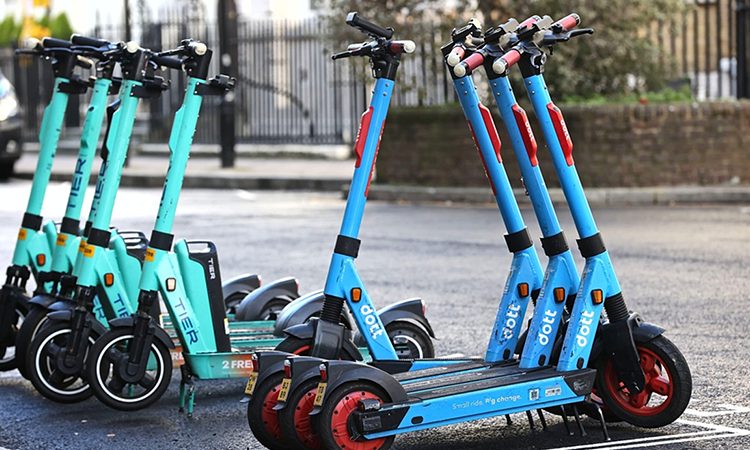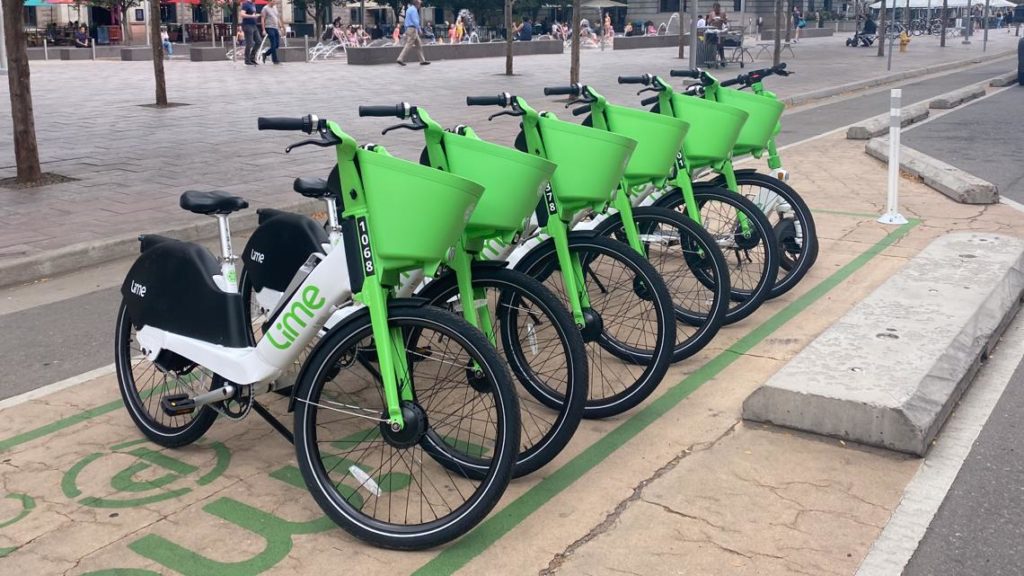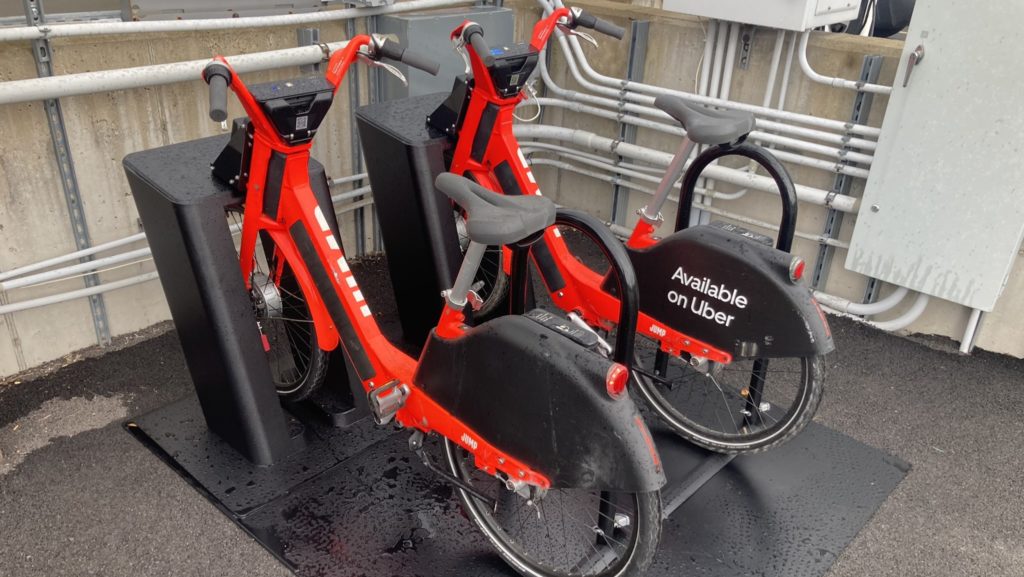Technology
🔒+⚡- Universal charge & lock stations, the missing brick of shared micromobility?
17 May, 2024
Shared micromobility news from the past couple of years has highlighted two important pathways to establish it as a vital urban mobility option in any city across the globe.
The advent of free-floating in 2018 still impacts the perception of citizens and public authorities: persistent issues with parking management remain the primary concern when shared bikes or scooters are available in a city. While the widespread adoption of mandatory parking zones and improvements in geolocation accuracy have partially addressed the problem, both local authorities and citizens continue to demand further improvements.
Bankruptcies, mergers, acquisitions, and restructurings have dominated headlines over the last semester. Global and local operators are facing a challenging economic situation where venture capitalists are becoming more cautious before investing millions. The key word for all involved is profitability. Any improvements must be carefully considered, and when it comes to operations, battery charging management emerges as a crucial topic as battery swapping represents an estimate from one-third to one-half (!!) of all OPEX.
The combination of these two requirements has accelerated the development of a potentially missing element in the virtual-station model: universal lock and charge docks.
First generation
It’s worth recalling that a pioneering trial to upgrade conventional virtual-station systems was launched by Bolt in Tallinn, Estonia, in October 2021. While not a universal solution, their station is compatible with multiple scooter models from the brand and demonstrated, at that time, that operators were seeking to improve their battery charging management. However, regardless of the results of this trial, the solution did not scale up in other markets.

Other (unsuccessful) trials took place in Paris, where Charge in 2020, and Duckt in 2022, implemented a few charging stations in selected areas of the French capital, which was then home to tens of thousands of scooters.
Ebikes and scooters OEMs are also involved in dock development: Segway backed a universal charge & lock station by MetroMobility, though this solution seems to target private fleets (corporate, hotels, etc.) more than shared services. As with the Charge station, the handling of a cable to be plugged into the vehicle extends the duration and complexity of the rental/return process, while making it susceptible to vandalism and additional maintenance requirements.
A technological challenge
There is, therefore, a need to develop new solutions that combine the best aspects of both dock-based and virtual-station models. The product must be 1/ vehicle-agnostic – capable of being fitted on any bike, e-bike or scooter, either on the production line or through a simple retrofit operation – and 2/ battery-agnostic – capable of communicating with and charging current Lithium-Ion batteries ranging from 36 to 58V.



Being vehicle-agnostic means being able to adapt to the geometry of the bike or scooter frame – tube diameters and angles – without interfering with other components such as the handlebar, front wheel, or basket. An optional device that can be fitted or retrofitted to a vehicle offers this flexibility. This has been Acton’s (who acquired Duckt technology) choice, and also the approach followed by a consortium of micromobility companies: Urban Sharing, Arcade, Linka, and Noval, who showcased their prototype during the Autonomy event in Paris last March.
These devices allow for the control of both vehicle locking with vandal-proof mechanisms and safe battery charging with intelligent communication protocols. Laurent Mercat, who leads the product development for the consortium, emphasizes that “the intelligence must be embedded in the vehicles: they already have IoT modules to control the lock & charge. Plus, it is cost-efficient compared to equipping each dock.”
Regarding battery charging, the industrial e-bike and e-scooter environment poses one of the most difficult hurdles to overcome when working on universal stations: the proliferation of relatively small players producing their solutions creates a lack of standards, especially concerning communication protocols. The CANopen protocol – based on EnergyBus consortium -, while not universal, is widely used and offers the best compatibility with some battery providers. Charging solutions must also comply with electrical safety requirements, but legislation concerning electrical safety in public spaces remains unclear in most countries.
A complex three-parties business model
Universal lock & charge stations add complexity to a service involving three parties: the station provider, the shared mobility service operator, and the city. Given the love-and-hate relationship between cities and operators in the shared mobility industry, adding a third voice to the table is a challenge.
A first requirement to achieve large-scale adoption of these stations is to change the time frame around micromobility services. Nowadays, contracts and licences are provided for one or two years to virtual-stations service operators. For companies dealing with light vehicles only, it is already quite short to turn it into a profitable business. Adding the cost of the stations and their implementation means that the contracts with local authorities must allow a positive return on investment for all parties. Such PPP or public tenders should then offer a contract for at least 10 years.
Hoping that procurement trends will evolve in a good direction, charging solution providers are exploring different ways to secure a spot in the streets.
re:Charge was created in 2019, years after the team anticipated the boom of electric shared mobility in North America. In collaboration with operators and vehicle suppliers, the company has developed a universal wireless charging solution and made a significant decision: “Operators told us that they want to retain control over vehicle locking and are seeking charging-as-a-service solutions. Therefore, we limited our locking feature to a passive loop and focussed on the development of a universal charging solution,” says re:Charge CEO Julien Bouget.

Taking the example of the USA, third-party service providers are paid at least USD 3.5 per battery swap, or around USD 10 per kWh. In addition to those battery swapping costs, one must budget for the additional batteries for rotation, the fireproof indoor charging racks and the often required electrical infrastructure upgrade, charging costs are at minimum USD 15 per kWh. re:Charge plans to sell electricity to operators for USD 5 to 7 per kWh: high enough to have a margin on the electricity cost, and low enough to convince operators to move away from swapping batteries at higher cost. In addition to direct savings, Charging as a Service solution providers are offering enhanced vehicle uptime, plus a complete lifecycle analysis of the batteries through their software.
But who will pay for the stations themselves? As already mentioned, cities are interested in having tidier streets and supporting the micromobility sector to become more sustainable. They also do not want to be tied to an operator who will install hundreds of stations requiring extensive grid and street work. “Having a separate provider for the stations would give cities more flexibility in their shared mobility services management. In North America, we will also explore the possibility for public transportation authorities to buy and operate the stations,” explains Julien Bouget.
Laurent Mercat’s consortium is taking a completely different approach to entering the market. Based on the assumption that adding complexity to the city-operator relationship might hinder the business, the solution will initially be pushed through dock-based bike-sharing tenders. “The idea is to offer cities and operators an alternative solution to the historical providers who offer heavy vehicles + stations + software proprietary solutions. We envision our station as an optional module that must be compatible with most vehicles and software to allow operators to assemble their own solution,” says Laurent Mercat.”Then, adding various types or brands of micromobility vehicles to the same network of charging stations would make it gradually universal with all involved partners.”
Large-scale dock-based services might be the Trojan horse for installing the stations and convincing both city officials and mobility operators of their benefits. With the ultimate goal of creating a universal charge & lock standard for the industry, the stations will be the foundation of their charging-as-a-service available to any virtual-stations services operator. “It also means that we cannot create additional dependence for the operator: our service must be managed within existing service management platforms, which we have to integrate with,” adds Laurent Mercat.
In an industry struggling to establish standards, developing universal charge & lock stations proves to be a significant challenge. Mechanical and electrical compatibility are crucial for creating the best hardware, but the sharing model adds a layer of complexity. The integration of these stations must facilitate 1/ usage for the rider, 2/ supervision and control for public authorities, and 3/ operational efficiency for the operator, which translates into additional technological requirements and the need to create an innovative business model among all parties. The race is definitely on to create THE charge & lock standard that could be adopted at scale.
Key missing item The Standard is published and verified already just the shared Industry did not participate at all jet more in the Chapteron Task 23 on parking and charging infrastructure in the IEA TCP report 2023: https://ieahev.org/wp-content/uploads/2023/06/Digital_HEVTCP_Annual_Report_2023_v0.3-3-1.pdf
Wellicht een leuke post als reactie 😊
SURE Mobility: The Comprehensive Solution for Shared Micromobility
The need for universal charge and lock stations in shared micromobility is crucial, as highlighted by recent discussions on their importance in creating a seamless and efficient system. SURE Mobility offers a comprehensive solution that not only meets these needs but exceeds them by prioritizing safety and efficiency through its cutting-edge technology.
Traditional shared micromobility systems face significant challenges, including inconsistent docking solutions, unreliable charging methods, and safety concerns related to battery management. SURE Mobility addresses these issues head-on with its innovative dock, lock, and charge system designed to enhance the user experience and operational efficiency.
Key Advantages of SURE Mobility:
Universal Charging and Locking Stations: SURE Mobility’s stations are designed to be universally compatible, allowing for a streamlined and user-friendly experience across different types of vehicles and brands. This universality is essential in reducing friction for users and increasing the adoption of shared micromobility solutions.
Non-Flammable Batteries: One of the major safety concerns in micromobility is the risk of battery fires. SURE Mobility utilizes non-flammable batteries, significantly reducing the risk of fires and ensuring the safety of both the users and the equipment.
Inductive Charging Technology: SURE Mobility’s inductive charging eliminates the need for physical connectors, which are prone to wear and tear. This technology not only improves the longevity and reliability of the charging infrastructure but also simplifies the docking process, making it more convenient for users.
Enhanced Safety Measures: Safety is a cornerstone of SURE Mobility’s design philosophy. By integrating advanced safety features and robust battery management systems, SURE Mobility ensures that all components operate within safe parameters, thus protecting users and reducing maintenance costs.
Operational Efficiency: The combination of universal docking stations, non-flammable batteries, and inductive charging leads to a more efficient system. This reduces downtime, increases the availability of vehicles, and enhances the overall user experience.
In summary, SURE Mobility is not just addressing the current challenges in shared micromobility; it is pioneering a safer, more efficient, and universally compatible future. By integrating advanced technology and prioritizing safety, SURE Mobility provides a robust solution that meets the evolving needs of urban transportation.
For more detailed information on how SURE Mobility can revolutionize shared micromobility, visit SURE Mobility.
http://www.sure-mobility.com
Wow, kinda hurt Parkent Cycles wasn’t included in this article. (https://www.parkentcycles.com) We have 1. Universal locking and 2. Universal charging. Actually we’re the only station on the market to physically adjust to your style of ebike for locking security. For charging, just bring the charging block issued with the ebike/scooter and plug it into the station for power, then store in the station’s internal locker while charging. Our relaunch this summer will include a cellular activated station that can report occupancy, type of user (ebike, scooter, other etc.) and the health of the system. Plus it’s one of the only stations that meets UL qualifications. Our stations can be used for individual parking as well as fleet bike shares. Why not have both next to each other?